Media | Articles
The Market for Fox-Body Mustangs Is Maturing
If ever there were a poster child for cheap speed from the last decades of the 20th century, it’d be the Fox-body Mustang. A 14-year production run that wrapped in 1993 turned loose about 2.6 million of them, and a massive, affordable aftermarket sprung up to support Fox-body drag racers, road course addicts, and stoplight ne’er-do-wells across the country.
The 5.0 smoke show was long and glorious. Even today, Fox-body Mustangs are still a great way to go fast, but all those years of cheap thrills also made for a lot of attrition. It’s getting harder to find a Mustang of this era that isn’t incredibly modified, incredibly beat-up, or both. That, plus the fact that the youngest ones are now over 30 years old means that good ones are beginning to be collectible. The sale of this clean 1993 Mustang LX 5.0 for $25,200 (including fees) on Bring a Trailer last week is an example of where the market appears to be headed.
By the time this one rolled off the line in ’93, the Fox body was fully evolved (you can find our detailed, year-by-year Fox-body Mustang buyer’s guide here). The 5.0-liter V-8 would see further development in other models, but by 1987 it offered a stout 225 hp and propelled the Mustang to low 14s in the quarter mile. Despite a 205-horse rating for ’93, it wasn’t any less strong—Ford knew the new-for-’94 SN95 would make 215 horsepower, so they made the ’93 models a little weaker on paper.
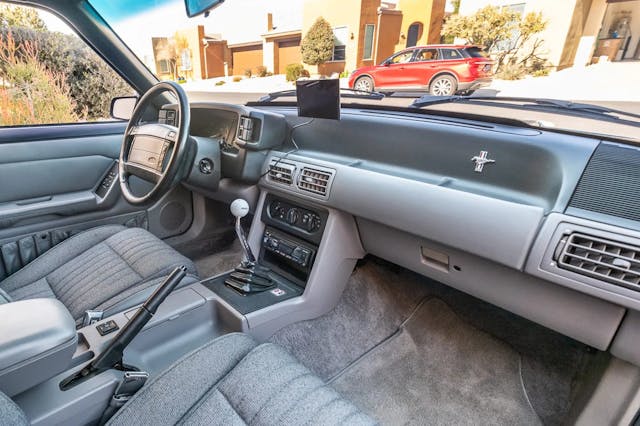
Though the GT sat atop the lineup and offered more standard features, choosing between an LX and a GT was as much an aesthetic decision as anything else. Later-year LX 5.0s offered a clean, trim look, and those long dual exhausts were an assertively subtle hint of what this otherwise understated pony was packing.
The $25K sale price of this oh-so-’90s Reef Blue example falls about $3K beneath its $28,100 Hagerty Price Guide #2 (Excellent) condition value, and roughly where our analysts expected. Values are up across the gamut of Fox-body years and trims, but the higher quality the car, the more valuable it has become. The days of good-example Fox-bodies being merely used performance cars are well and truly gone. In fact, #2-condition cars have nearly tripled in value over the last five years, and they are up 15 percent in the last year alone. In contrast, driver-quality #4-condition (Fair) cars have doubled in value but sit at a still-affordable $7900.
Marketplace
Buy and sell classics with confidence
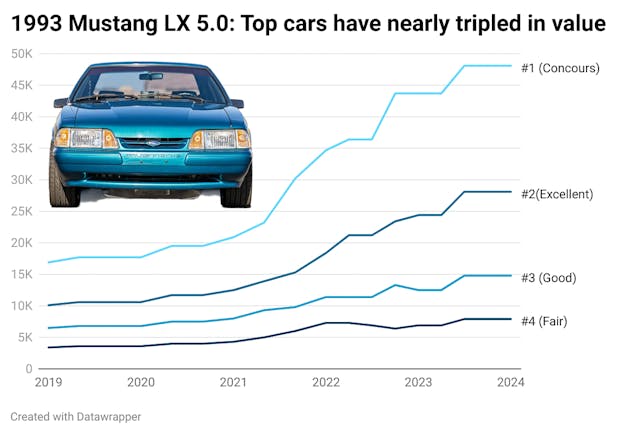
The keys to this particular car’s success were its relatively low (21K) miles and a stack of documentation. The mileage is in that sweet spot, just above “so low you’d be afraid to drive it” territory. A recent service that replaced a number of underhood items, along with a slew of additional paperwork, verified that this LX has been well taken care of. These attributes would have been a benefit in prior years, but buyers now clearly place a significant premium on them—a sign of a maturing market for the Fox body.

One thing that separates this generation of Mustangs from prior ones as they’ve reached collector status, however, is that buyers don’t appear to shy away from modifications, at least as long as they’re tasteful. The tweaks on this car aren’t significant—wheels, lowering springs, a shifter, rocker arms, headers, and exhaust are the primary changes—and this car’s sale didn’t appear to suffer from them.
Given how many Fox-bodies were made, it’s unlikely that garden-variety LX 5.0s and GTs from this era will ever be truly expensive. But, between the ever-decreasing count of quality examples and the increasing number of people lusting after the car that was top dog in their high school parking lot, the 1979–93 Mustang is well on its way to collector status.
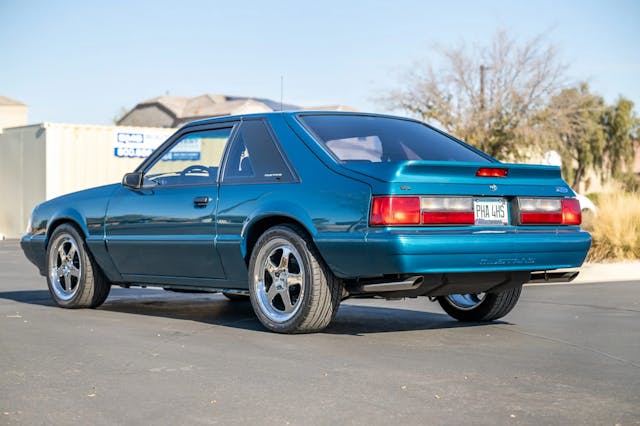
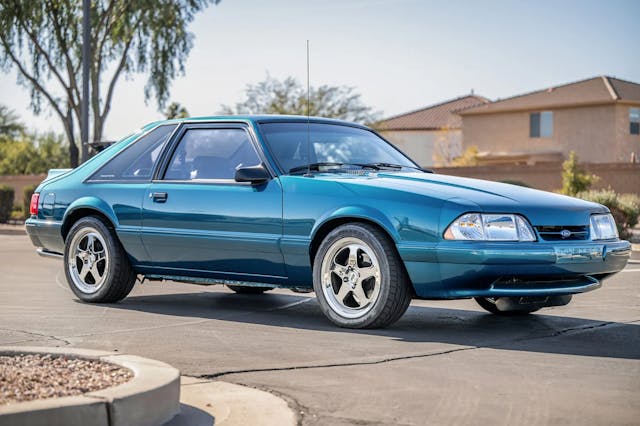









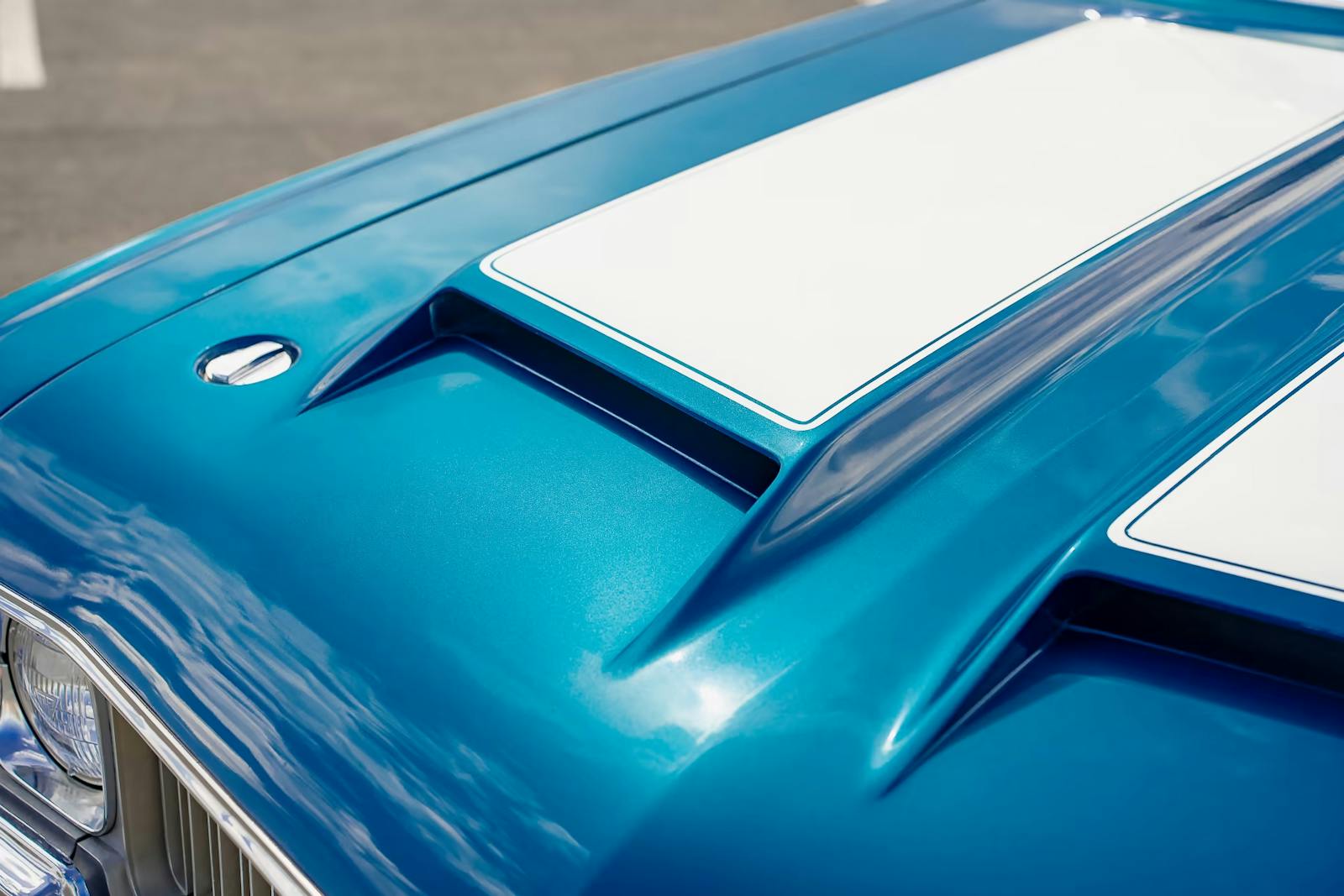
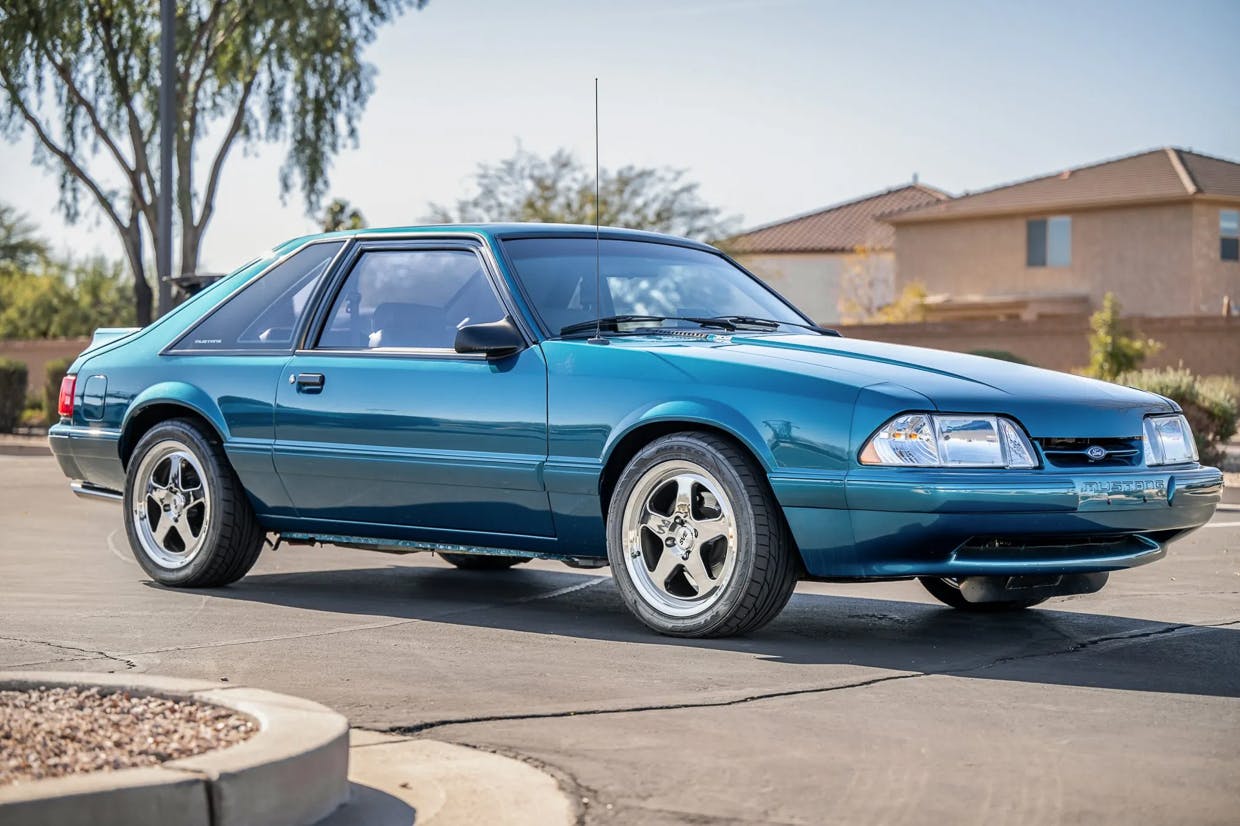
Still lotsa bang for the buck. Decent examples seem to pop up for sale pretty regularly, so not all were beat into the ground. These have aged well design-wise, IMO. Straight outta the ’80s/early’90, in a good way.
I got a fox body mustang for sale it has a 302in it a 5 speed transmission. It’s red with black stripes it has a roll cage in it.racing sets in it. It runs but needs a wiring harness put in it. The clear is peeling off it .I want to sell it ASAP tom ludvigsen 3603496275
It’s a 1984 foxy body. Also they say it’s a mix car
I got a fox body mustang for sale it has a 302in it a 5 speed transmission. It’s red with black stripes it has a roll cage in it.racing sets in it. It runs but needs a wiring harness put in it. The clear is peeling off it .I want to sell it ASAP tom ludvigsen 3603496275 it’s also a covertable.
Also ita a gt1984 fox body it’s on the car. I will take$ 3.ooo.oo for it gas headers on it. Car is straght.
This car is stock. Not bit up.every thing is there.who do you guys now who I can sell it to. It’s a solid car not rusted out
Sorry, but in my opinion, these are the the most boring body style to ever wear the pony.
Even the maligned Mustang II had more panache.
I realize that they filled a niche at the time, and did provide some driving fun.
Ford had a hit, just not with me.
I feel the same way about the Porsche 356. I just don’t see the appeal.
Or the 1957 Chevy. Don’t see it.
The ’56 was much nicer looking in my opinion.
Amen! They do not resemble the Mustang in any way! I bought a 2006 GT, first one that kinda looked like the original.
Why must it look like the original to be appreciated? That’s a snobby, elitist mentality.
1968-70 Chargers don’t look like 1966 Chargers
2nd, 3rd and 4th gen Camaros don’t look anything like 1st gens
1970-72 Chevelles look nothing like 1964.
C8’s look nothing like 1953 C1’s
I’m more of a Chevy/Pontiac guy but I can appreciate Fox-body Mustangs. In the 80’s and 90’s, they were THE car to have and what you measured your own car against. I did my share of street racing they back then, and the Fox Mustangs were king. You wanted to beat them and when you did, you were fast. I still love seeing a clean LX notchback with a 5.0 and manual trans on the road. And they always sounded good.
Well said! You were correct on everything you said.
Fox Platform not Fox Body
The 1979 thru 1993 Mustangs are commonly called the “Fox body” Mustangs. The Fox platform itself, with modifications and updates, continued on thru the 2004 Mustang.
Thumbs up. (since there’s no thumbs up button anymore)
These cars are light. The 8.8 rear is nearly indestructible. Parts are plentiful (remember there are lots of 4 cylinder donors out there!). I also like the more rare Mercury Capri version.
My first partner drove a ’79 Capri 2.3L 4-speed in yellow with a black houndstooth cloth interior, which we affectionately called the Bumble Bee. As far I know, Michael Bay tried to cast it as its own namesake in the movie, but the car had a severe inferiority complex to Megan’s Fox body. Only years later did it realize it still has more residual value than she does.
My buddy has a Capri, but also a SVO, which I’m surprised weren’t mentioned in the article.
shhhhh-let sleepers sleep so they are seen & not hidden please. SVO daily driver here weather permitting.
This was the last of the breed. Pony cars were performance cars built on light cheap econo car platforms and this was it.
These models were light affordable and easy to make fast. Ford like GM went more Ho a specific GT platform and cost went up and sales declined.
These cars will be worth good money the more original and less hacked up they are. The SVO and special editions will hold a Premium. Coupes in original and with a manual will be good as they were very light.
I have an ’89 Mustang hatchback. It came with a 4cyl, I put a 302 in it. I’m thinking about selling it.
I got a 1986 mustang 5.0 LX Drop Top in decsent conditon don’t know what I want to do with it.
Well seeing that my 93 Reef Blue LX 5.0 has only 125,000 miles and is in better than good condition, just changed the spoiler and tail lights. I might want to look at having it priced to see its worth.
We have a 1988 bought it from Williams Ford in kc in 1989 white gt 302 with 5 spd kept in storage in our garage gt convertible runs fine red int
My stint as a “wholesaler” in the late 80’s and early 90’s allowed me to possess, even if only for days at a time, many of these Mustangs. The LX 5.0 coupes, a CHP car in disguise, I recall were like driving an ice cube. The rear end constantly wanted to introduce itself to the front section of the car. Oddly, I still have several yards of the grey cloth material used in these cars as it was also used in the late 80’s F series trucks. It was widely used when reupholstering older trucks.
I applaud the writer using the phrase “lusting after the car that was top dog in their high school parking lot” rather than the dubious generation-theory breakdowns.
If nostalgia had no power, there would be little logical market for most old cars.
In a world where you can spec out a Camry really easily that outperforms a 70s Camaro in drag racing, autocross, etc. while being in great comfort “better” is clearly about personal tastes rather than measurable things.
I for example, would much rather drive my driver-quality 69 Mustang with rattles and creaks, original suspension performance and no AC compared to our family Subaru Outback. Granted the seat is more comfortable in the Mustang for me, and I like being able to roll down a window and not have that buffetting wind noise modern vehicles are prone to…
True on the wind buffeting of most, newer vehicles, 4 doors and SUVs and pick-ups. I had ’90 LX 5.0 and ’93 LX 5.0 both 5 spds. Light weight, very affordable fun, insurable and with a Steeda street suspension and urethane bushings, turned it into a very good handler with sharp steering. Now I drive a 2013 Boss with double the power, handling, brakes and attitude from the factory. Nostalgia is nice but I can’t go back.
It’s funny that some earlier generations, commented on the fox body – ‘ but it’s not a Mustang ‘ while for later ones this is the car that comes to mind first. But they both have in common that their styling was very much European inspired. Fifteen years after the first pony, Ford went back to square one in philosophy that way and produced a car reflecting then current design and leaving any impressions of its predecessors off. I prefer the cleaner looks of the LX over the later year GTs ( not to mention an appreciable weight saving ). Still a Fox platform car? A Bob Glidden Fairmont Futura tribute is a tempting option. Hell he won every single race in it and you’re probably not going to see another at the car show.
This isn’t the half of it… Recently, a ’90 Fox body Saleen “Sedan” (aka “Notch”) sold on BaT for an incredible $76K in a no reserve auction. This Saleen Fox was special, as it was a one off, special order, with paperwork signed by Steve himself. It also had over 130K miles on it, but was still in incredible original condition. I know everything about the car as I originally ordered the car from Saleen new, and kept it for 16 years, running track days, daily driving and continuously developing the car both for myself and for a couple of aftermarket pars suppliers. I was also in communication with the 3 successive owners over the 16 years that the car was out of my possession, answering questions about the car’s setup and unique set of components.
Note: The car was built full Autopower roll cage and full welded Global West underbody reinforcement which was integrated with the roll cage, as well as the rest of the Saleen “competition parts” from the Saleen catalog. It suffered no chassis stress, no firewall or tunnel cracks and the seat was still attached on its original studs. When I sold it, the original door seals were still completely intact, which is incredibly unusual for a 16 year old Mustang. It is still as tight as new. The suspension was all set up on Delrin/Aluminum bushings, and still show no wear. The car is as fresh as new. Original paint, no rust and spotless undercarriage and unit body.
The price was a surprise, and there were several collectors bidding. The new owner has contacted me about the car, and surprisingly, there were very few changes (none significant) from its original development and special chassis setup. Saleen 90-235 has been undergoing some minor refurbishment (fixing leaks, checking the chassis setup and some engine tuning) and a larger set of front brakes (which it always needed). I personally put over 124K miles on it (including more than 6000 track miles) before I sold it, and the next 3 owners didn’t drive it much at all. It’s appearance changed slightly as I had ordered it with deleted graphics and wing (supplied in a Saleen box), and black custom machined Gotti wheels for road use, and Simmons custom built wheels for track days. The new owner has acquired the original wheels. The car was sold on Saleen Sterm wheels.
This price sort of blows away every Saleen Mustang save for the ultra low mile cars, and all of the Fox Mustangs that I have ever seen, including the ones that have had T Bird IRS installed, and the rarer Fox Cobra.
So, there may be more potential in Fox body Mustangs for growth. However, I would not consider one an investment. I know the question is “How much did you sell it for in ’06? Well, I sold it for $8500 ,which was a big price for a 124K mile ’90 Mustang notch back then. For me, it was a sponsored ride. Considering that the original cost was over $30K, over 16 years, it had more than $20K invested in it. I was happy. And.. I am happy to see that the car survived, and is now thriving with a new, interested owner. Did it appreciate? Nah… But, man was it fun to own. I sold it mainly because I would need to invest in a fresh engine, fuel cell, brakes and 8 more custom wheels. It was more than I wanted to have tied up in a Fox Mustang. I can’t own everything at once (where would i put it all?), so I moved on to a Lotus 11… I still have it.
Never tire of reading about your car!
Your car sounds like my 1986 Saleen that I had special ordered from Ford and had dropped shipped to Saleen for the conversion because I was going to be competing Nationaly in SCCA’s Solo II events. I had ordered it in December of 1985 and while it was getting built at Saleen I was in touch with them. At the time they were not building any R models for the public but were considering doing that and they told me that if they were going to it would be close to what mine was going to be. They had ran out of the Hurst shifters they were installing in the cars and were shipping them without them, but they told me that I was going to be racing mine they took one of their race team’s back up Hurst shifters and installed it into mine. Plus they said that since mine was something special they installed one of the 3 gray Momo steering wheels they had into mine instead of the black ones the other cars got. As I had raced mine over the years from 1986 to 2003 it had evolved as any race car does keeping up with class rules for ESP (E Street Prepared). We were allowed to update and back date between the generation of car, which in my case was from 1979 to 1993. So I picked the best from those years, brakes and drivetrain, but we had to do engine, transmission and rear axle each as a complete component. So the car now sits with a balanced and blueprinted ’93 Cobra motor and trans with a ported GT40 tubular intake, BBK 1 1/2″ long tube headers and 2 1/2″Dynomax exhaust. Rear axle with 3:73 gears and custom Auburn Gear posi unit, we were the one any only development car for them. 4 wheel disc brakes off of the SVO Mustang were used. We were open on shocks ( Koni double adjustable), sway bars (adjustable), springs (used adjustable spring perches to corner weigh the car), and bushings ( Delrin bushings up front). The car also has a Griggs Torque arm and Panhard bar, allowed as a torque device, with the upper control arms deactivated by using foam rubber as bushings ( we weren’t allowed to remove them). Body and interior had to remain stock, so when the Cobra R came out the rear seat was removed. An Autopower 4 point roll bar was installed right from the beginning to help stiffen the chassis along with the convertible chassis braces. With all these changes the car has racked up over 300 first place finishes in both the men’s and women’s classes (including 1 National win, 13 Divisional wins, 4 National Tour wins, 9 PA State Championship wins, and at least 216 local wins. Plus, a total of 40 year-end championships in two different local regions.) The sponsorship decals were all on magnetic material, so it didn’t harm the paint and all of the original parts, including the engine, trans, etc., have been stored away, so still have them. I still own the car, now with 10,700 miles (was trailered to events), and still sits in it’s National winning configuration and all of the original paint and interior are still looking factory fresh. I had developed the car to win, which it did, and did al of the work on it myself. I even had at one time the head of the Solo events recommend some people to get in touch with me to learn how to make a Fox Mustang be competitive. I am now only showing the car at local cruses and shows. If anybody would like more info and keep up on the car I had created it’s own web site for it: https://www.facebook.com/Saleen.86.0068/
SOLO II RACING RECORDS
MEN’S Class ESP
I. Regional
A. Class Champion 1987-2001, 2003; Steel Cities Region SCCA
B. Driver of the Year 1999; Steel Cities Region SCCA
C. Year End Champion 1984, 1987-1990, 1993-1994, 2000; North
Hills Sports Car Club
(Most number of total & consecutive since club start in 1958)
II. SCCA NEDIV Divisional
A. 1st: 1995
B. 2nd: 1983-1994
III. SCCA CENDIV Divisional
A. 1st: 1998
IV. SCCA National Tours
A. Evansville, IN 1993: 3rd
B. Norfolk, VA, 1994: 2nd
C. Evansville, IN, 1994: 3rd
D. Pittsburgh, PA, 1996: 1st
V. PA State Championships
A. 1st: 1992, 1995, 1996, 2000
B. 2nd: 1993, 1994
VI. SCCA SOLO II Nationals, Kansas
A. Middle of group; 1990-1992, 1994
B. 8th: 1996
C. 7th: 1997
Co-Driver’s Class ESPL (Lady’s Only)
I. Regional
A. Class Champion 1983-1997; Steel Cities Region SCCA
B. 2nd year end points 1995; North Hills Sports Car Club
II. SCCA NEDIV Divisional
A. 1st: 1983-1986, 1991-1997
B. 2nd: 1987-1990, 1999
III. SCCA National Tour
A. Evansville, IN: 2nd 1993
B. Evansville, IN: 1st 1994
C. Norfolk, VA: 1st 1994
IV. PA State Championships
A. 1st: 1992-1996
B. 2nd: 1999
V. SCCA SOLO II Nationals, Kansas
A. 4th: 1989
B. 3rd: 1991
C. 2nd: 1992
D. 3rd: 1994
E. 5th: 1995
F. 2nd: 1996
G. 1st: 1997
Current modifications (all original parts are stored) for competing in
ESP class are:
I. Motor:
A. ’93 Cobra 5.0L motor, balanced & blueprinted
B. Pair complete ’93 Cobra heads (F3ZZ-6049-B) with matched
ports
C. Melling & FPP blueprinted oil pump
D. FPP oil pump drive
E. Canton fully baffled racing oil pan
F. 65mm throttle body & EGR spacer
G. Steeda 73mm mass air
H. Monroso cold air intake
I. PowerFlowed GT-40 intake with matched ports. Match flowed
Cobra injectors
J. Jacobs Ultra Coil
K. Jacobs Energy Team ignition
L. MAC full length headers – 1 1/2″
M. Custom bent Stainless H-Pipe
N. DynoMax mufflers & pipes – 2 1/2″
O. McLeod aluminum flywheel
P. Centerforce II clutch & pressure plate
II. Axle:
A. 7.5 in. rear axle with 3.73 gears
B. Auburn special built Possi (Car was development car for
Auburn.) (7 deg. cone angles with 1350# preload springs)
III. Brakes:
A. ’91 front spindles
B. ’91 front rotors
C. ’86 SVO Mustang front calipers
D. ’93 Cobra Mustang rear brakes
E. PowerPad (Blue) front brake pads
F. PowerPad (Blue) rear brake pads
G. SVO brake adjusting valve
H. Maximum Motorsports stainless brake hoses
IV. Suspension:
A. Front:
1. ’87 up front crossmember
2. ’90 up tie rod ends
3. Convertible motor mounts
4. Global West front control arm bushings
5. Ground Control front 1000# spring & adjustable perch
6. Global West upper strut brace
7. Steeda billet caster camber plates (upper strut mounts)
8. Koni double adjustable struts
9. Rancho adjustable front sway bar
10. Ford Motorsport reduced steering travel kit
B. Rear:
1. Ground Control rear 225# springs & adjustable perch
2. Poly lower control arm bushings
3. Koni double adjustable shocks
4. Maximum Motorsports panhard bar
5. Griggs Racing rear torque arm kit
6. Rancho adjustable rear sway bar (changed links to spherical
bearings)
C. Wheels:
1. (4) Saleen Enki (16×7)
2. (4) Saleen Riken (16×7)
3. (6) Revolution (16×9)
D. Tires:
1. Hoosier 275/45R/16 – A302S
VI. Body:
A. Autopower roll bar
B. ’79 Turbo aluminum front bumper
C. Moved battery to back
D. Ford Motorsport convertible brace kit
E. Rear seat delete
I HAVE A 90GT HATCHBACK I BOUGHT W 168K THT WAS 9YRS AGO STILL HAVE MY BABY ORIGINAL INTERIOR AND ALL